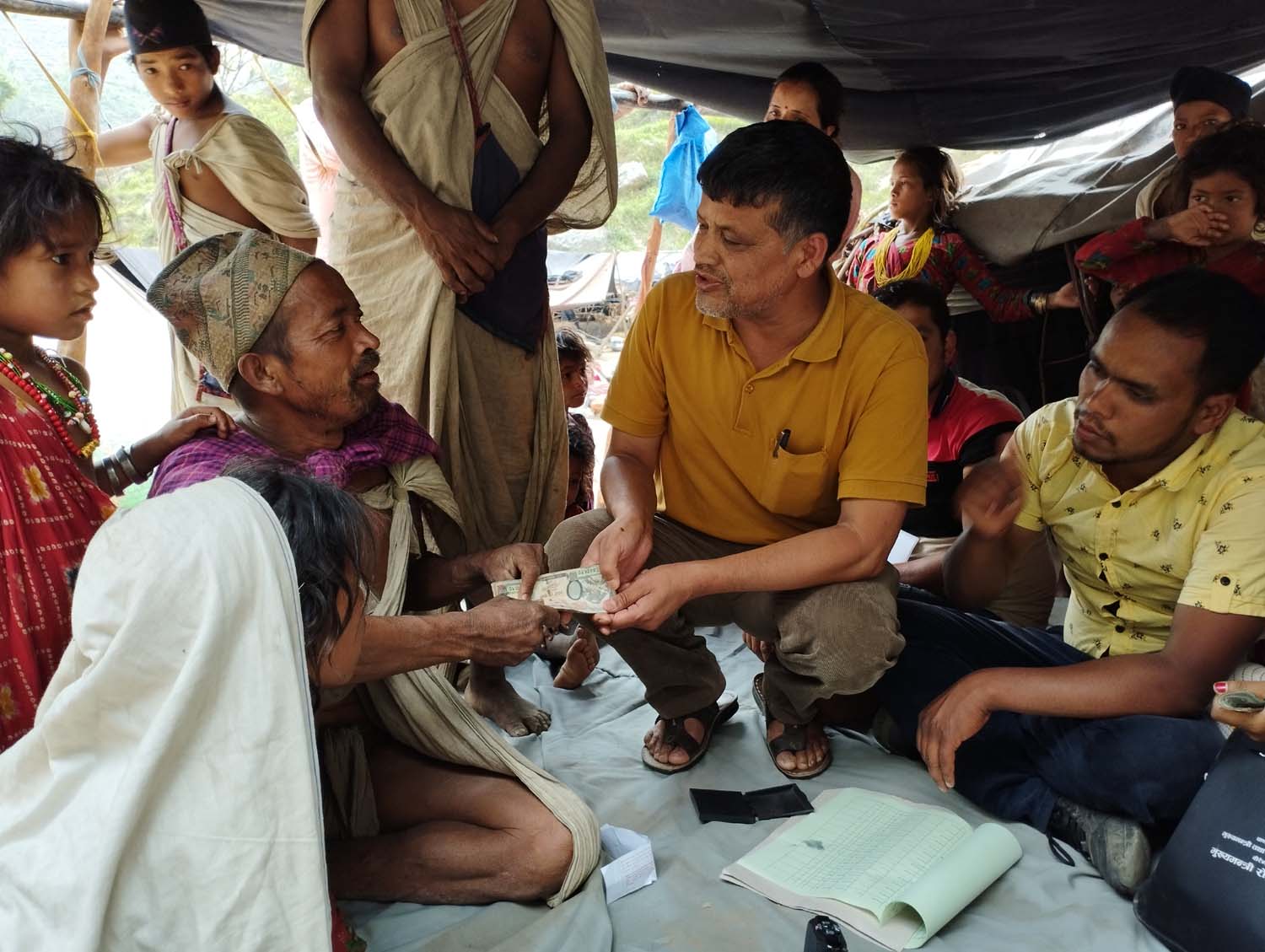The resource crunch that the government is currently facing after failing to meet the revenue target has not prevented ruling political parties from announcing populist programs which are sure to increase the state’s long-term liability.
One of the announcements made through the Common Minimum Program (CMP) by the ruling parties on Monday is increasing the number of social security scheme beneficiaries to six million in the next five years. If this announcement is materialized, the number of beneficiaries will almost double in the next five years. As of the last fiscal year 2021/22, there were 3.57m beneficiaries of social security.
As per the 2021 population census, Nepal’s population is 29.19m. Providing a social security allowance for 6m means the country’s one-fifth of the population will receive a cash dole-out. The CMP talks about providing cash dole-outs to elderly people, widows, single women, disabled people, members of communities on the verge of extinction, and different categories of children with a certain allowance from the state. While announcing the plan, the ruling parties have not disclosed how the state could generate the resources to meet the resources needed for increasing the both number and amount of social security allowance.
Economists say it was an irresponsible act on the part of the ruling parties to announce a new dole-out package at a time when the government is struggling to meet even existing recurrent expenditure from the revenue. As of Jan 9, the government collected revenue of Rs 385.73bn while its administrative expenditure stood at Rs 436.23bn, according to the Financial Comptroller General Office.
“It is quite expensive for the state to provide a social security allowance of one in every five persons,” said a former finance secretary. “It is too big a number and making an increased number of people dependent on the state when there is no extra source of income is not sustainable in the long-term.”
Economist Posh Raj Pandey said that the government should have streamlined the social security scheme. “What is happening now, is in terms of socio-economic perspective, those who’re entitled are not getting, and those who’re not entitled are getting the scheme,” he said.
Economists say the government could spend a higher amount of state resources on improving the quality of health and services and make these services affordable to the majority of people instead of doling out cash for individuals. Cash doll out is a misguided priority of the political parties just to get political benefits. It should be very targeted and should be available to only limited people, they say.
Over the last several years, the number of beneficiaries of social security allowance and the amount to be given to each beneficiary has been rising rapidly. There were 2.04m beneficiaries of social security allowance in fiscal 2011/12 which increased to 3.57m in the last fiscal 2021/22. The amount being spent on them has however been rising even faster. For example, the government spent Rs 68.61bn on social security allowances in the fiscal year 2020/21, according to the Department of National ID and Civil Registration.
The government is expected to spend nearly double that amount in the current fiscal year due to an increased number of beneficiaries and an increased amount for them. The government has allocated Rs 105bn for social security allowance in the current fiscal year, according to the Finance Ministry.
Despite the growing burden of social security allowances, successive governments have continued adding more beneficiaries and expanding the purview of social security. While presenting the budget for the fiscal year 2021/22, the then KP Sharma Oli-led government increased all social security allowances by 33 percent, including the elderly allowance to Rs 4,000 per month from Rs 3,000 per month.
A year later, the Sher Bahadur Deuba-led coalition government, reduced the eligibility age for receiving an elderly allowance to 68 years from 70 years at a time when Nepal’s life expectancy has been rising. As a result, a total of 113,911 new beneficiaries were added to the elderly list due to the lowering of the eligibility age during the first quarter of the current fiscal year, according to the Department of National ID and Civil Registration. Besides the natural rise in the number of beneficiaries, lowering of age limit increased the number of beneficiaries substantially.
According to a World Bank report, the overall public spending on social protection rose rapidly in Nepal for a decade—from the fiscal year 2010/11 to fiscal 2019/20. According to the report, the government’s spending on overall social protection was Rs 26 billion in the fiscal year 2010/11, which surged to Rs 189bn in fiscal 2019/20, which includes both cash dole-out and other social protection programs.
The first social security scheme in Nepal was launched in 1994/95 by the government led by the then CPN (UML) leader Manmohan Adhikari. The scope of the scheme, which started by providing Rs 100 a month to the elderly, was gradually expanded to include other types of beneficiaries.













